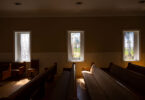Planting during cooler months gives trees and shrubs a better chance of getting established before the heat of summer hits, according to Michael Wheeler, Cooperative Extension coordinator in Hall County.
For any planting, he recommends beginning with a solid plan and a list of appropriate plants, and selecting quality plants will improve the growth of new trees and shrubs.
Examine any plants before purchase. Check the roots by removing the plant from the pot and examining the roots on the surface of the soil mix. White, healthy root tips are desirable. Avoid brown or black roots. Each inch of trunk thickness measured 6 inches above the soil needs 10 to 12 inches of root ball diameter for good growth.
Inspect the shape of trees and shrubs to avoid future problems. A well-formed shade tree will have a strong, central trunk with horizontal branches arranged every 12 to 18 inches up the tree. Shrubs should be uniformly branched in all directions and fairly dense. Avoid leggy shrubs, which have no lower branches and will likely remain bare at their base. Also check the plant’s growth potential. Very short, thin twigs are signs of a struggling and weak plant. For evergreen trees and shrubs, abundant foliage will indicate last year’s growth.
Be careful not to bring home a pest problem. Check the stems and under the foliage for insects. Also look for broken or damaged branches or trunks. Damaged plants are harder to establish.







